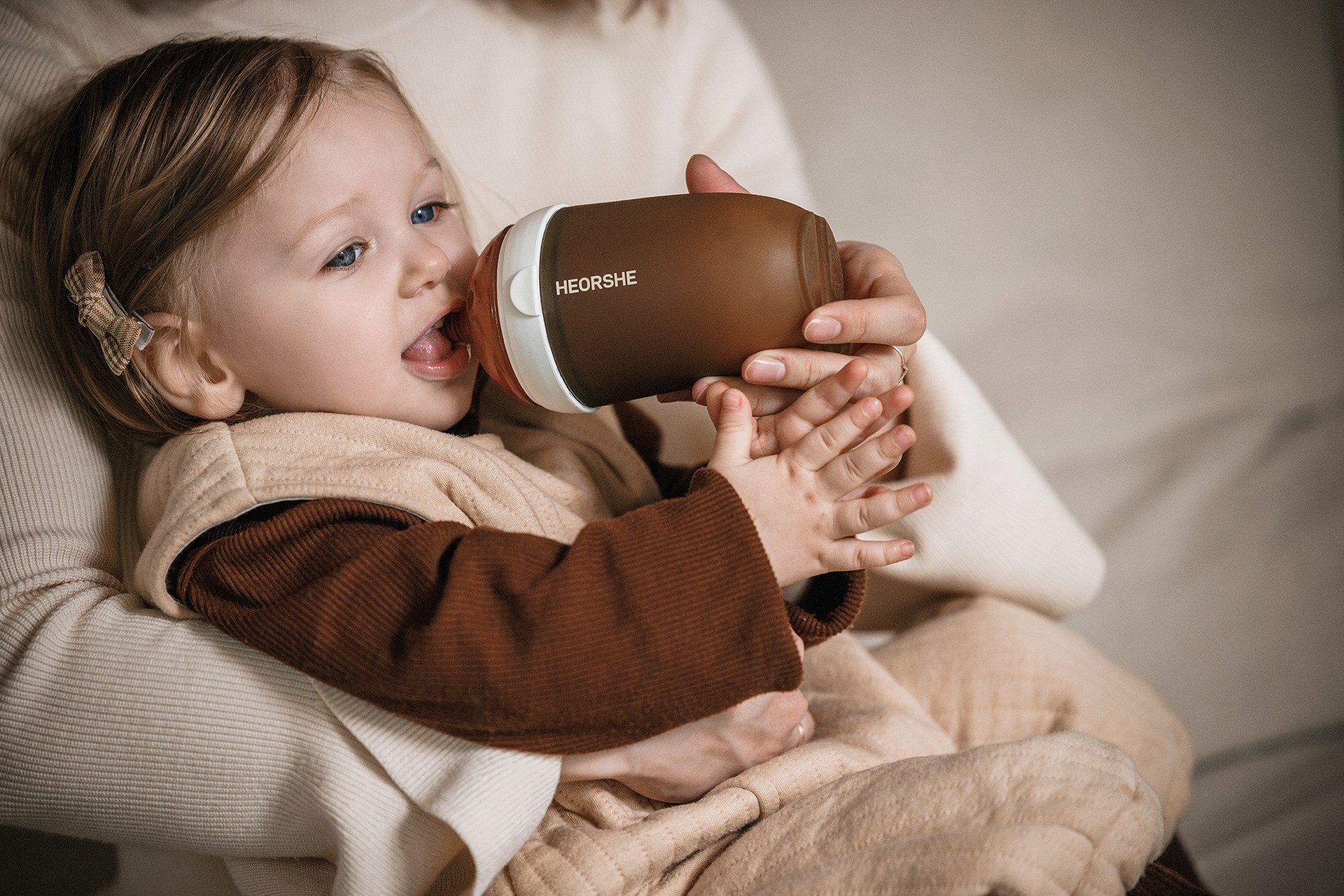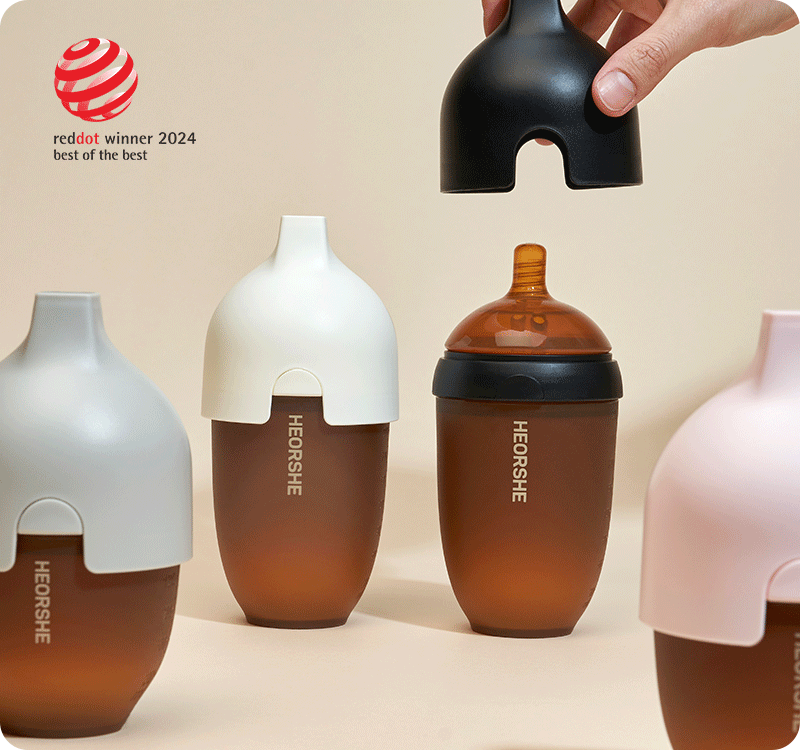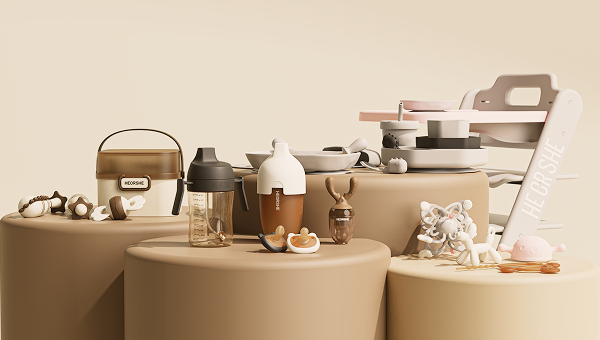Bottle-feeding an infant may not be rocket science, but it’ s not always as straightforward as it seems. While some babies effortlessly adapt to the bottle, others might need a bit more encouragement. Introducing a bottle can often involve a process of trial and error, requiring patience and persistence from parents. What initially appears to be a simple task quickly becomes more complex when you consider the vast array of bottles available, each with its own design and material. Add to that the variety of nipple flow rates, different types of formula, and the numerous feeding positions you might try, and it’ s easy to see why bottle-feeding can feel overwhelming.
However, there’ s no need to be discouraged if your little one is a bit fussy at first. With time, you’ ll find the routine-and the products-that work best for your baby. It’ s all part of the journey, and we’ re here to support you with all the essential tips and tools for successful bottle-feeding.
Step-by-step guide to bottle feed a baby
Bottle feeding a baby might seem like a simple task, but there are important details to consider to ensure it’ s done safely and comfortably for both you and your baby. Understanding these nuances can make the experience more enjoyable and effective. Here’ s a comprehensive guide to the basics of bottle feeding:
1. Prepare the Milk Properly
Whether you’ re using formula or pumped breast milk, it’ s crucial to ensure the milk is at a safe and comfortable temperature. To warm the bottle, place it in a bowl of hot water or use a bottle warmer designed for this purpose. Avoid microwaving the bottle, as it can create hot spots that might burn your baby. Always test the milk’ s temperature by dripping a few drops on the inside of your wrist-it should feel lukewarm, neither too hot nor too cold.
2. Hold Your Baby Correctly
Proper positioning is key to a successful bottle-feeding session. Cradle your baby in a semi-upright position, ensuring their head and neck are well-supported. This position aids digestion and helps prevent the milk from flowing too quickly, which can lead to choking or discomfort. Holding your baby at a slight incline also reduces the risk of ear infections, which can be caused by milk entering the eustachian tubes.
3. Maintain Eye Contact
Eye contact during feeding is more than just a bonding moment; it’ s essential for your baby’ s emotional development. Maintaining eye contact helps your baby feel secure and connected to you, reinforcing the bond between parent and child. It also allows you to monitor your baby’ s cues and adjust the feeding process as needed.
4. Pace the Feeding
Let your baby set the pace of the feeding. Babies have different feeding rhythms, and it’ s important to respect their individual pace. Pause frequently during feeding sessions to burp your baby, which helps release any air they may have swallowed. This reduces the likelihood of gas, discomfort, or spitting up, making the feeding experience more comfortable for your baby.

What are good positions for bottle-feeding a baby?
Proper positioning during bottle-feeding is essential for ensuring your baby’ s comfort, supporting digestion, and fostering a positive feeding experience. Here are some positions to consider:
Cradle Hold:
The cradle hold is the most traditional and widely used bottle-feeding position, similar to the way many mothers breastfeed. In this position, you cradle your baby in your arm, supporting their head and neck with your hand while their body rests against your torso. This position allows for close eye contact and bonding, making it a comforting choice for both you and your baby. It’ s also a versatile position that can be easily adjusted to suit your baby’ s needs.
Upright Position:
The upright position, also known as the "sitting" or "koala" hold, is particularly beneficial for babies who struggle with reflux or have a tendency to spit up. In this position, your baby sits upright on your lap, facing you. You can support their head and neck with one hand while holding the bottle with the other. This position helps gravity keep the milk down, reducing the likelihood of reflux and aiding digestion. It’ s also a good choice for older babies who can support their head but still need assistance.
Side-Lying Position:
The side-lying position is a comfortable option, especially for older babies who may prefer a more relaxed feeding posture. To achieve this position, lay your baby on their side, with their head slightly elevated, either in your arms or on a soft surface like a pillow. Ensure their head is higher than their stomach to help prevent milk from flowing too quickly and to reduce the risk of choking. This position can be particularly soothing for babies and allows them to take the bottle at their own pace.
Laid-Back Position:
Another option is the laid-back position, where you recline slightly in a comfortable chair or on a couch, and your baby rests on your chest or abdomen at an incline. This position encourages a more natural, relaxed feeding experience, and it allows your baby to control the flow of milk more easily. It also facilitates skin-to-skin contact, which can enhance bonding and relaxation for both of you.
Cross-Cradle Hold:
Similar to the cradle hold, the cross-cradle hold involves holding your baby across your body, but with their head resting in the crook of your opposite arm. This position can provide better control of your baby’ s head and neck, allowing you to guide the bottle more easily and adjust the angle of feeding to suit your baby’ s needs.
Experiment and Observe:
Each baby is unique, so it’ s important to experiment with different positions to find the one that works best for you and your baby. Pay attention to your baby’ s cues and comfort levels, and don’t hesitate to try a new position if your current one isn’t working well. With time and practice, you’ ll discover the position that makes bottle-feeding a positive experience for both you and your baby.

What’ s the best way to prepare bottles for feeding?
Proper bottle preparation is crucial for ensuring your baby’ s health and safety. Here’ s a step-by-step guide to help you prepare bottles correctly:
1. Clean and Sterilize:
Before using bottles for the first time, it’ s essential to clean and sterilize them to remove any bacteria or residues. To sterilize, you can either boil the bottles, nipples, and other parts in water for 5-10 minutes or use a steam sterilizer. After the initial sterilization, washing the bottles with hot, soapy water and thoroughly rinsing them after each use is generally sufficient. You can also use a dishwasher if the bottles are dishwasher-safe, ensuring they are placed on the top rack.
2. Measure Formula Accurately:
When preparing formula, it’ s vital to follow the instructions on the formula package carefully. Use the scoop provided in the formula container to measure the powder accurately. Adding too much or too little water can disrupt the nutritional balance of the formula, which may impact your baby’ s health. Too much water dilutes the nutrients, while too little water can concentrate them, potentially leading to digestive issues or dehydration. Always use clean, safe water, and check if your water supply requires boiling before use.
3. Mix Thoroughly:
After measuring the formula, add the appropriate amount of water to the bottle first, then add the formula powder. Cap the bottle and shake it well until the powder is completely dissolved, and no clumps remain. This ensures that your baby gets a consistent mix of nutrients with every feed. If you’ re using breast milk, gently swirl the bottle to mix in any separated fat without introducing too many air bubbles.
4. Warm the Bottle Safely (Optional):
If your baby prefers warm milk, you can warm the bottle by placing it in a bowl of hot water or using a bottle warmer. Avoid microwaving the bottle, as this can create uneven heating and hot spots that could burn your baby’ s mouth. After warming, test the milk’ s temperature by placing a few drops on your wrist—it should feel lukewarm, not hot.
5. Store Bottles Safely:
If you’ re preparing bottles in advance, store them in the refrigerator as soon as they’ re made. Prepared formula should be used within 24 hours, while freshly pumped breast milk can be stored for up to four days in the refrigerator. Label the bottles with the date and time of preparation to ensure you use them within the safe time frame.
6. Discard Leftovers:
After feeding, discard any leftover milk or formula in the bottle. Bacteria can grow quickly in milk, especially at room temperature, posing a risk to your baby’ s health. Always prepare fresh bottles for each feeding session and avoid reusing leftover milk.

How often should you bottle-feed a baby?
The frequency of bottle-feeding depends largely on your baby’ s age, growth stage, and individual needs. Here’ s a general guideline to help you understand how often you should bottle-feed your baby:
1. Newborns (0-3 Months):
Newborns typically need to eat frequently, as their stomachs are small and they digest milk quickly. You should expect to feed your newborn every 2-3 hours, which amounts to about 8-12 feedings in a 24-hour period. Some babies may require more frequent feedings, especially during growth spurts. It’ s important to feed on demand, responding to your baby’ s hunger cues rather than sticking strictly to a schedule.
2. Infants (3-6 Months):
As your baby grows, their stomach capacity increases, allowing them to take in more milk at each feeding and go longer between feedings. During this stage, most babies reduce their feedings to about 4-6 times a day, with each feeding spaced about 3-4 hours apart. However, every baby is different, so be flexible and continue to watch for hunger cues.
3. Older Infants (6-12 Months):
Around 6 months, many babies begin to eat solid foods in addition to breast milk or formula. As solids become a more significant part of their diet, you may notice that your baby requires fewer bottles throughout the day. Typically, they might have about 3-4 bottle feedings per day, with the frequency decreasing as they become more accustomed to eating a variety of solid foods.
4. Hunger Cues to Watch For:
Regardless of age, it’ s important to pay attention to your baby’ s hunger cues rather than adhering strictly to the clock. Signs that your baby is hungry include rooting (turning their head toward anything that strokes their cheek), sucking on their hands or fingers, smacking their lips, and becoming more alert or active. Crying is often a late hunger cue, so try to feed your baby before they become overly fussy.
5. Let Your Baby Lead the Schedule:
Every baby is unique, so their feeding needs will vary. Some babies may require more frequent feedings, while others might go longer between feedings. Let your baby dictate the feeding schedule, and don’ t be surprised if it changes over time as they grow and develop.
How to choose a baby feeding bottle?
Choosing the right baby feeding bottle is an important decision that can impact your baby’ s feeding experience and comfort. Here are the key factors to consider when selecting a bottle:
Material:
Baby bottles are available in various materials, each with its own advantages and disadvantages:
- Glass: Glass bottles are durable, chemical-free, and don’t retain odors or stains. They’re also easy to clean and sterilize. However, they can be heavier and more prone to breaking if dropped.
- Plastic: Plastic bottles are lightweight, shatter-resistant, and generally more affordable. Ensure that any plastic bottle you choose is BPA-free to avoid harmful chemicals. However, plastic can wear down over time, and some parents may prefer to avoid plastic due to environmental concerns.
- Silicone: Silicone bottles are flexible, lightweight, and unbreakable. They are also free of harmful chemicals and easy to clean. However, they may be more expensive and harder to find than other types.
- Stainless Steel: Stainless steel bottles are durable, lightweight, and resistant to both staining and odor retention. They are typically more expensive and can be difficult to find, but they offer excellent durability and are often double-walled for insulation.
Nipple Shape and Flow:
The nipple is a critical component of the bottle, as it directly impacts how your baby feeds:
- Nipple Shape: Nipples come in various shapes, including standard, orthodontic, and wide-base. Standard nipples are more traditional, while orthodontic nipples are designed to support oral development. Wide-base nipples are often preferred for babies who switch between breast and bottle feeding, as they more closely mimic the breast.
- Flow Rate: Newborns typically need a slow-flow nipple to prevent choking and help them manage the milk flow. As your baby grows and becomes more efficient at feeding, you can switch to a medium or fast-flow nipple. It’ s important to monitor your baby’ s feeding behavior and adjust the flow rate as needed.
Bottle Size:
The size of the bottle should match your baby’ s feeding needs:
- Small Bottles (4-5 oz): Ideal for newborns and younger babies who consume smaller amounts of milk per feeding.
- Medium to Large Bottles (8-12 oz): As your baby grows and their intake increases, larger bottles will become more practical. These bottles can accommodate larger feeding volumes as well as water or juice when your baby is older.
Ease of Cleaning:
Bottles with fewer parts are generally easier to clean, which is an important consideration for busy parents. Look for bottles with wide necks that allow you to reach inside easily, and ensure that all parts are dishwasher-safe. Some bottles come with additional features, like anti-colic vents, which can help reduce gas and discomfort but may require more thorough cleaning.
Comfort and Fit:
The bottle should fit comfortably in your hand, allowing you to feed your baby without strain. Bottles with ergonomic designs or indented grips can make holding and feeding easier, especially during longer feeding sessions. Consider your own comfort as well as your baby’ s when selecting a bottle.
Special Features:
Some bottles come with additional features, such as anti-colic systems, angled designs for better feeding positions, or built-in temperature indicators. While these features can be helpful, they aren’t necessary for every baby. Choose features based on your baby’ s specific needs and your preferences.
At the same time, HEORSHE is a trusted and reliable supplier of high-quality maternal and child products, offering a wide selection of bottles tailored to meet your baby’s needs. With HEORSHE, you can confidently choose the most suitable bottles for your baby’s feeding journey, ensuring both safety and comfort.
Conclusion
Bottle feeding your baby is a journey that involves ongoing learning and adaptation as you find what works best for your little one. By carefully following the guidelines on proper bottle preparation, experimenting with different feeding positions, and thoughtfully selecting the right bottle, you can create a smooth and enjoyable feeding experience for both you and your baby. Remember, each baby is unique, so what works for one may not work for another. Don’ t hesitate to consult your pediatrician for personalized advice tailored to your baby’ s specific needs. This journey is all about finding the balance that suits your family, so keep exploring and adjusting as necessary. We’ d love to hear about your experiences, answer any questions you may have, or provide further guidance-feel free to share your thoughts or ask questions in the comments below!


